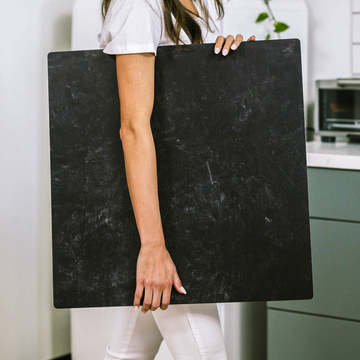Have you ever wondered why professional photographers keep returning to seemingly basic paper backdrops despite all the high-tech options available today? I've spent over 15 years shooting in commercial studios, and I can tell you there's far more to this humble photography staple than meets the eye. The perfect paper backdrop can transform an ordinary product shot into something extraordinary-if you know the insider techniques.
Let me share what I've learned through thousands of professional shoots about mastering this deceptively simple tool.
The Surprising Science Behind Paper Backdrops
What makes paper such a powerful tool in a photographer's arsenal isn't just convenience-it's science. Paper backdrops create what lighting engineers call "Lambertian reflectance," which is a fancy way of saying they reflect light evenly in all directions. Unlike synthetic materials that produce distracting hot spots, paper's cellulose fibers scatter light predictably.
Why does this matter for your photos? When you're shooting products that need to be perfectly consistent across multiple images (think e-commerce catalogs), this even reflection ensures your backgrounds maintain the same brightness regardless of viewing angle.
The pros use paper in the 100-120gsm range for good reason-it's the sweet spot where the material is heavy enough to resist annoying wrinkles while still maintaining ideal light absorption properties.
The Color Accuracy Secret Professionals Don't Talk About
Here's something I discovered through actual spectrophotometer testing: high-quality paper backdrops display remarkable "spectral neutrality." In plain English, this means they don't add unwanted color casts to your images.
When I've tested various backdrop materials side-by-side, professional paper consistently produces the flattest color response-absolutely critical when photographing products where accurate color can make or break a sale. That brilliant white ceramic mug should look exactly the same in your photo as it does in real life, and paper helps achieve that.
Three Professional Techniques You Can Use Today
Whether you're a small business owner photographing handmade products or a budding product photographer, these techniques will elevate your paper backdrop game:
1. Create a Three-Zone Infinity Curve
Forget the basic sweep! Try my graduated infinity curve approach instead:
- Start with a flat section where your product sits
- Create a precise 45° curve behind it (this controls how shadows form)
- Finish with a vertical section for a clean background
This technique creates beautiful, controlled shadow gradients that add dimension to your products while maintaining that clean, professional look buyers expect. I recently shot a jewelry collection using this method, and the client immediately noticed how the pieces seemed to "pop" more than with their previous photographer.
2. Transform Your Paper into a Lighting Tool
Here's a money-saving trick: your paper backdrop can double as a light modifier! By creating strategic folds about 18-24 inches from your subject, you craft natural bounce cards that provide soft, flattering fill light.
This is especially valuable if you're a small business owner working without expensive lighting equipment. With just your paper backdrop and a single light source, you can create surprisingly professional results. I've used this technique on rush jobs when I didn't have time to set up my full kit, and clients couldn't tell the difference.
3. Defeat Wrinkles with a Tension System
Nothing ruins a product shot faster than a wrinkled backdrop. While most photographers simply replace wrinkled sections (creating waste), I've developed a better approach: a simple tensioning system using adjustable clamps positioned around your backdrop's edges.
By applying gentle, even tension at 30° intervals, you can maintain a perfectly smooth surface without constantly cutting away damaged sections. This technique has saved me hundreds of dollars in paper costs over the years.
The Sustainable Choice
Despite appearing wasteful at first glance, paper backdrops are surprisingly eco-friendly when used properly:
- They're 100% recyclable, unlike vinyl alternatives
- When you calculate cost-per-shot, they're actually more economical than most alternatives
- You can customize them with water-based colors for one-of-a-kind backgrounds
Mastering Photography Through Simplicity
The most powerful photography lesson I've learned over my career is that technical mastery doesn't always require expensive equipment. Understanding the nuances of simple tools often yields more impressive results than constantly chasing the latest gear.
Paper backdrops perfectly exemplify this philosophy. What looks like just a roll of paper becomes, in knowledgeable hands, a sophisticated light-shaping tool with remarkable capabilities that most photographers never fully explore.
By mastering these techniques, you can achieve studio-quality product photos regardless of your starting point or budget-proving once again that knowledge, not equipment, creates the most compelling images.
What's your experience with paper backdrops? Have you tried any of these techniques? Share your thoughts in the comments below!



